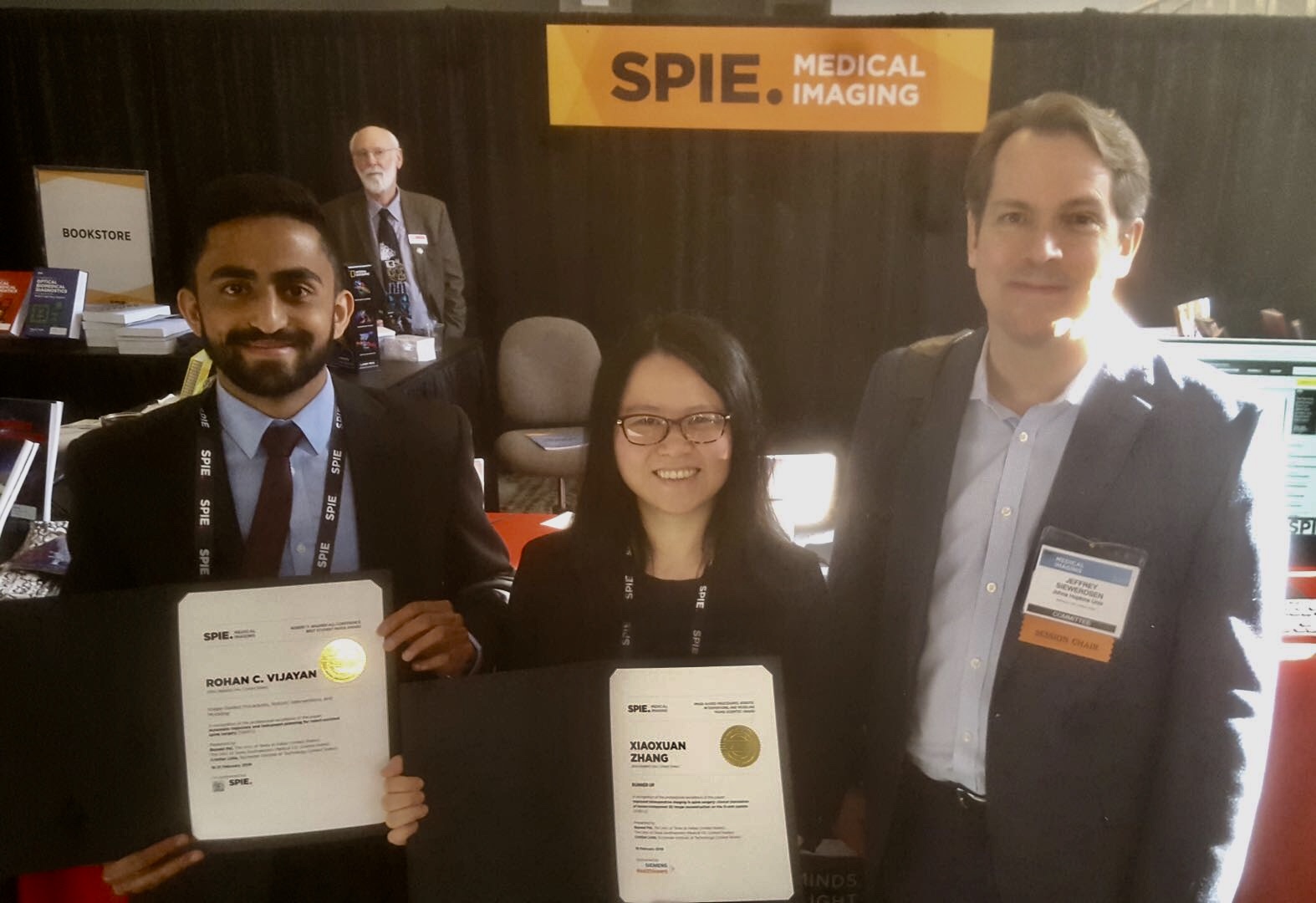More than 1,200 people gathered in San Diego, CA last week for the annual SPIE Medical Imaging Conference, which featured more than 1,000 presentations, including three dozen involving Johns Hopkins researchers, on the latest advances in medical imaging. Three members of the Johns Hopkins Department of Biomedical Engineering were recognized at the conference for the impact of their research on the field. All are members of the I-STAR Lab, headed by faculty members Jeff Siewerdsen, Webster Stayman, and Wojciech Zbijewski.
Each year, the conference features cutting edge technology in areas such as digital pathology, image-guided procedures, computer-aided diagnosis, image processing, machine learning, and other biomedical applications.
Those recognized from Johns Hopkins BME include:

